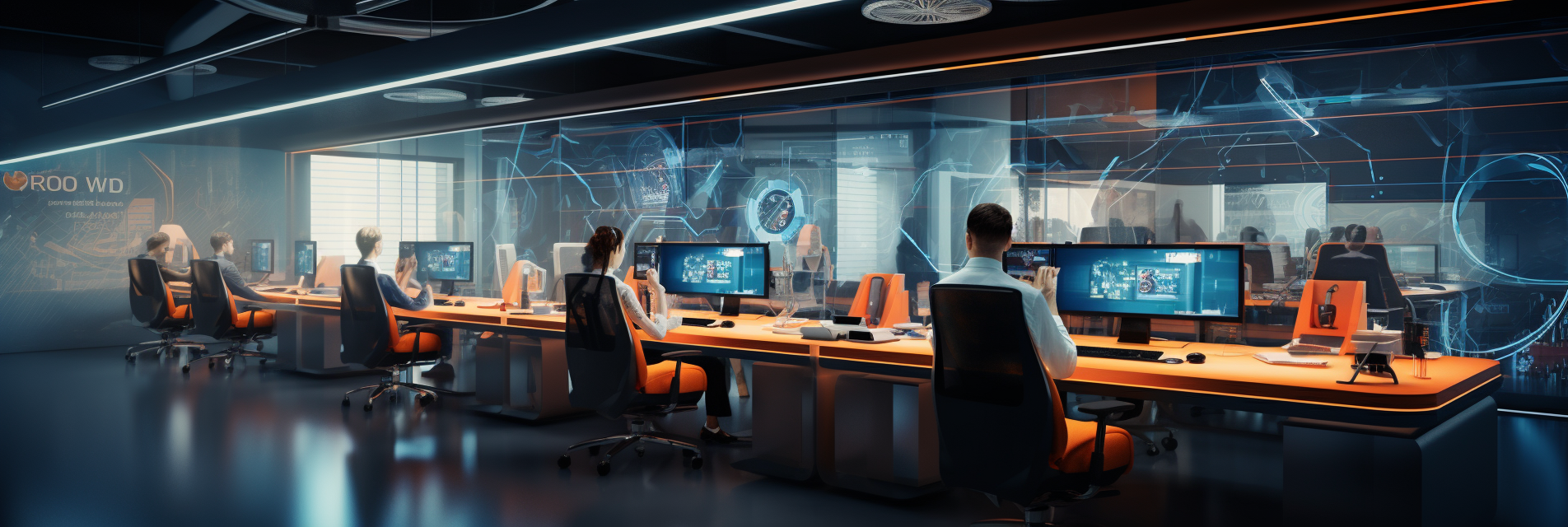
Why Most People Are Totally Wrong About the Future of AI & Industrial Automation
The world is changing rapidly, and the use of Artificial Intelligence (AI) and Industrial Automation is at the forefront of this change. The integration of these technologies is transforming the way we live and work, creating new opportunities for growth and innovation while also presenting challenges and concerns.
However, the key to making the most of this change is to prepare ourselves for it, to embrace the future of AI and Industrial Automation while also acknowledging the risks and taking steps to mitigate them.
One of the most significant benefits of AI and Industrial Automation is increased efficiency. By using machine learning algorithms and automated processes, companies can save time and money while also increasing their output. For example, in the healthcare industry, AI has been used to analyze medical records and predict patient outcomes, which can lead to more accurate diagnoses and better treatment plans.
Similarly, in manufacturing, industrial automation has allowed companies to streamline their processes and reduce costs while also increasing their production capacity. Another advantage of AI and Industrial Automation is their ability to perform tasks that are too dangerous or difficult for humans. For example, in the mining industry, autonomous vehicles are being used to navigate hazardous terrain and transport materials, reducing the risk of injury and improving efficiency.
In agriculture, precision agriculture techniques such as drone mapping and soil sensors are being used to optimize crop yields and reduce waste, while also minimizing the use of pesticides and other harmful chemicals.
Despite the benefits, there are also concerns about the impact of AI and Industrial Automation on jobs. A report by the World Economic Forum suggests that by 2025, more than half of all current workplace tasks will be performed by machines, which could lead to significant job losses in some industries.
However, it is important to note that AI and Industrial Automation also create new job opportunities in areas such as software development, data analysis, and robotics maintenance. According to a report by the McKinsey Global Institute, AI could contribute up to $13 trillion to the global economy by 2030, creating around 20 million new jobs in the process.
To make the most of the opportunities presented by AI and Industrial Automation while also mitigating the risks, individuals and organizations need to take steps to prepare themselves for the future. This could include upskilling and reskilling workers to adapt to new roles and technologies, investing in cybersecurity to protect against cyber threats, and developing ethical frameworks to guide the use of AI.
For example, the British government has launched a £100 million investment in AI and robotics research, which includes funding for initiatives to help people develop the skills they need to work alongside AI systems.
Similarly, companies such as Microsoft and Google have developed ethical principles to guide the development and use of AI, with a focus on transparency, fairness, and accountability.
In conclusion, the future of AI and Industrial Automation is bright, offering new opportunities for growth and innovation while also presenting challenges and concerns. The key to making the most of this change is to prepare ourselves for it, to embrace the opportunities while also acknowledging the risks and taking steps to mitigate them. By doing so, we can create a future that is not only more efficient and productive but also more equitable and sustainable.
Liked this blog? Sign up for our exclusive AI monthly newsletter.
Previous articles

AI 2024: Predictions and Advances in Artificial Intelligence
There’s no doubt 2023 was a landmark year for AI technologies. From healthcare to customer service and beyond, AI transformed the way the average person communicates, works, and solves complex problems. In this article, we’ll delve into the advances and breakthroughs achieved in AI development, as well as the opportunities and challenges that lie ahead […]

AI Call Centers: Turning Customer Support into Customer Experience
When a customer contacts an AI-enabled call center, two things can happen: The customer leaves satisfied with the interaction Their issue is not resolved and they leave with a negative association of your brand Keeping customers satisfied relies on the appropriate use of AI in call centers. This often means centering AI automation as a […]